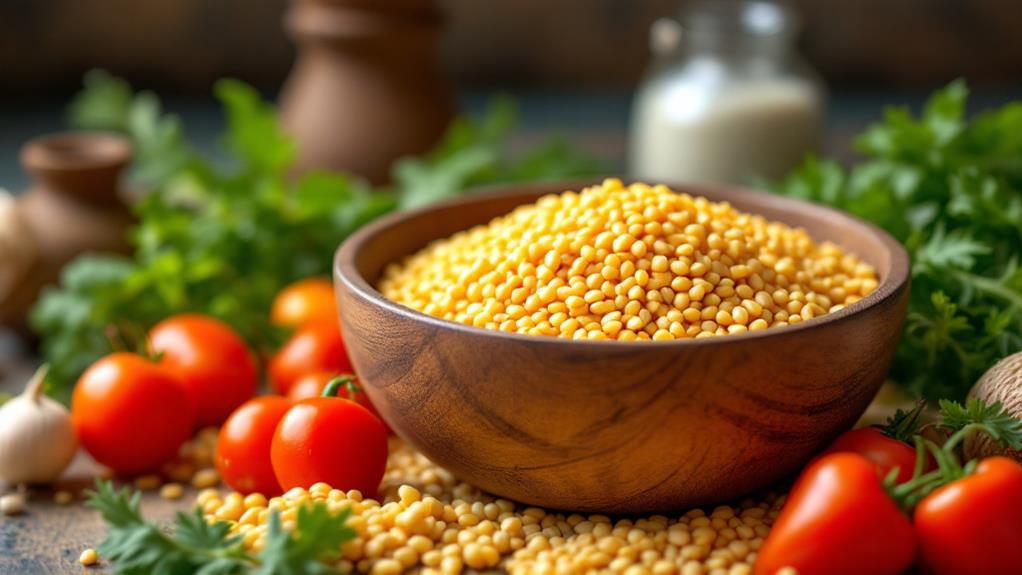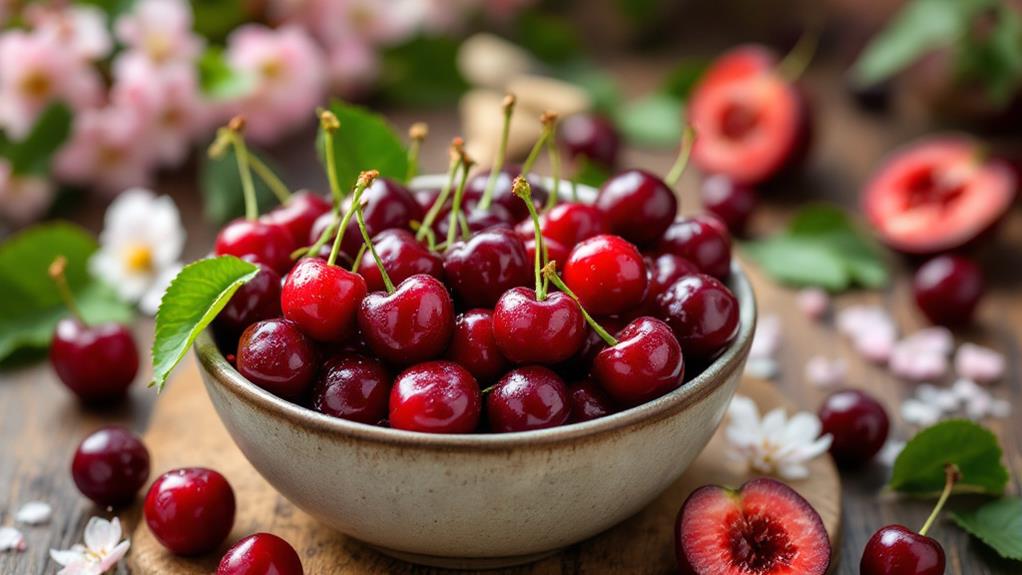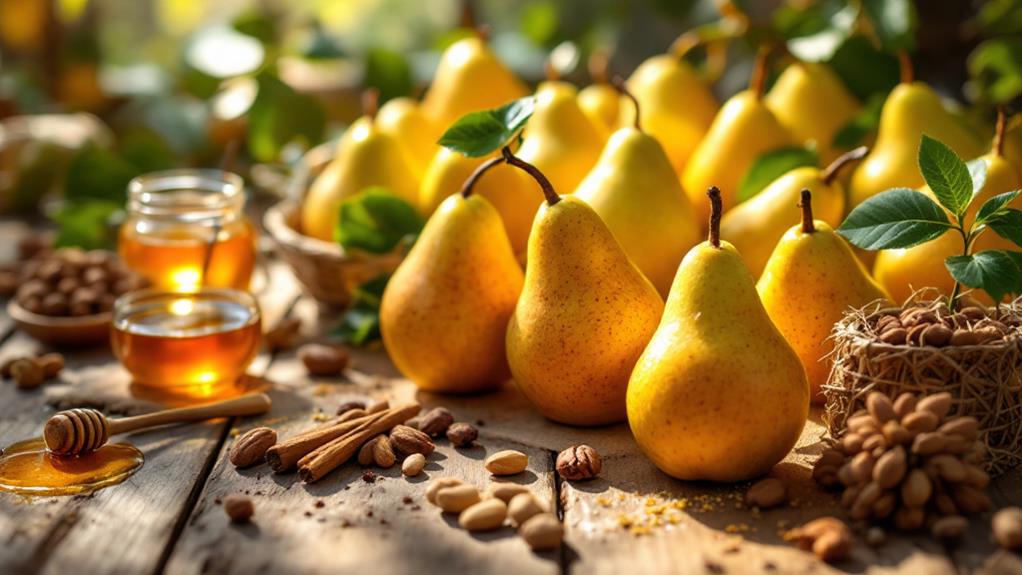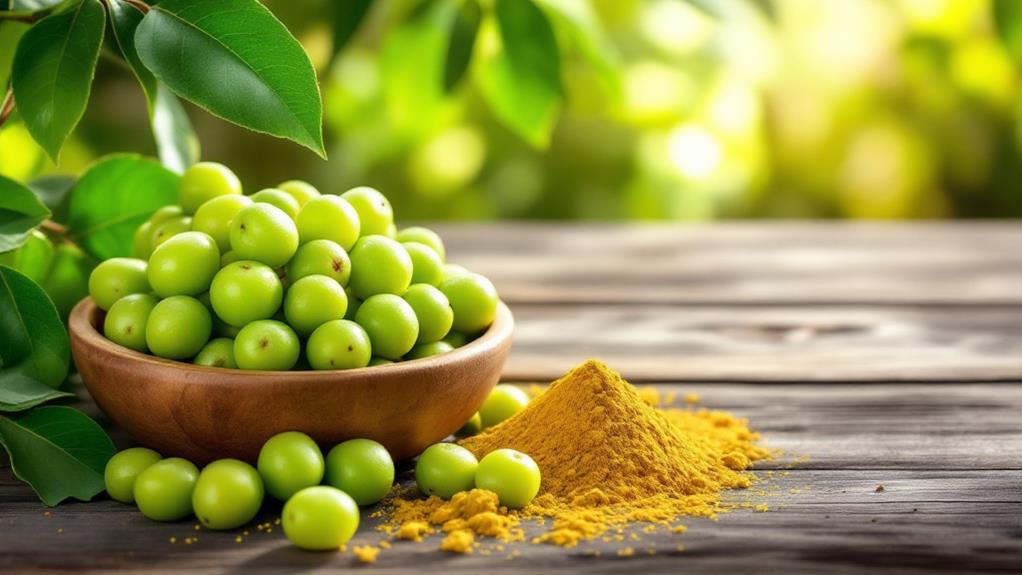Everything You Need to Know About Santol: Health Benefits and Uses
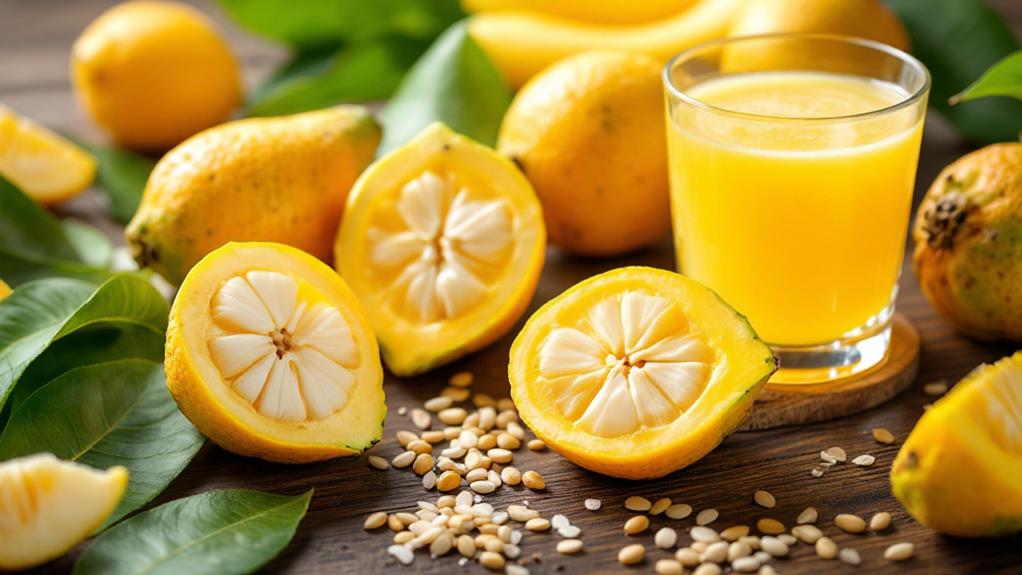
If you're curious about santol, this tropical fruit from Southeast Asia is both tasty and packed with health benefits. It offers a high dose of Vitamin C, elevating your immune system, along with antioxidants and fiber that support digestion and may reduce chronic disease risks. You can eat santol fresh, incorporate it into salads, or use it as a tangy supplement to dishes like Filipino Sinigang. Just be cautious with its seeds, as they're inedible. With its rich culinary uses and nutritional benefits, there's a lot to investigate about how santol can improve both your meals and health.
Origin and Characteristics
Some might say the Santol fruit is a hidden gem of Southeast Asia. As a tropical fruit native to this region, particularly the Philippines and Indonesia, Santol, or Sandoricum koetjape, boasts unique characteristics that make it stand out. The fruit typically measures between 4 to 7 centimeters in diameter, with a semi-rough, leathery texture. As it ripens, you'll notice its color changing from green to a golden yellow or brown-yellow hue, hinting at its readiness to be enjoyed.
When you crack open a Santol, you'll find a thick, edible rind encasing five segments of juicy, fibrous pulp. However, be cautious about the large, inedible seeds inside. The taste of Santol can surprise you, ranging from sour to sweet. Its flesh offers delightful candy-like notes reminiscent of peach, apple, and citrus, while the rind provides a sharper taste.
Santol trees are impressive, too, stretching up to 50 feet tall. In the right warm, humid tropical climates, these trees can produce between 19,000 to 24,000 fruits annually, making them a fruitful enhancement to any tropical landscape. Their prolific nature guarantees you won't run out of this delicious fruit anytime soon.
Nutritional Profile
When exploring Santol's nutritional profile, you'll uncover its impressive benefits for your health. Santol fruits are power-packed with bioactive compounds, making them a nutritious supplement to your diet. A 100-gram serving of santol provides about 30% of your daily recommended Vitamin C intake. This vitamin is crucial for supporting your immune system and maintaining healthy skin. You won't just get vitamins, though; santol is also a good source of important minerals.
While santol isn't particularly high in iron, it does offer significant amounts of potassium—about 174 mg per 100 grams. Potassium is crucial for heart health and proper cellular function. Moreover, the fruit contains approximately 3 grams of dietary fiber per 100 grams, promoting digestive health and helping to reduce cholesterol levels.
Santol fruits are low in calories, with only about 72 calories per 100 grams, making them an excellent choice for weight management. In addition, antioxidants like flavonoids in santol combat oxidative stress, potentially reducing the risk of chronic diseases. Though not renowned for its iron content, santol's mix of bioactive compounds and medicinal properties can still play a significant role in a balanced diet.
Health Benefits
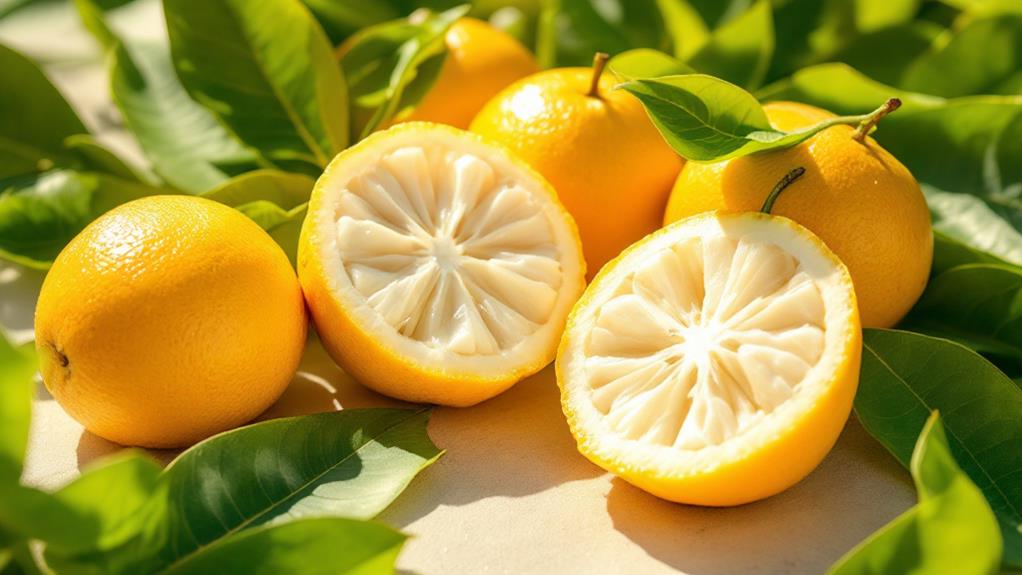
Santol's impressive health benefits make it a valuable improvement to any diet. When you add santol to your meals, you're not just enjoying its unique taste; you're also elevating your immune system. Thanks to its rich vitamin C content, santol helps protect against infections and illnesses, keeping you healthier. If you struggle with digestive issues, this fruit's high fiber content can be a game-changer. It aids digestion, promotes gut health, and may help reduce the risk of constipation, ensuring your digestive system functions smoothly.
Moreover, santol is packed with antioxidants, which play a significant role in combating oxidative stress. By doing so, they potentially lower your risk of chronic diseases like heart disease and cancer. If inflammation is a concern, you'll appreciate santol's anti-inflammatory properties, which support comprehensive health and wellness.
Additionally, santol might be a wise choice if you're watching your blood sugar levels. It can assist in blood sugar regulation, making it a suitable option for diabetics when consumed in moderation. Welcome the health benefits of santol and improve your well-being by incorporating this remarkable fruit into your diet.
Culinary Uses
Investigate the delightful versatility of santol in the culinary world. This unique fruit, harvested from Santol trees, offers a sweet and tangy flavor that can enhance many dishes. You can enjoy it raw or toss it into salads for a rejuvenating twist. If you've got a sweet tooth, try incorporating santol into desserts like ice creams and puddings, where it adds a lively note.
In Filipino cuisine, santol plays a prominent role. It acts as a souring agent in dishes like Sinigang na Bangus, enhancing the flavor profile with its distinct tang. In addition, it can be preserved in sweetened vinegar, transforming it into a delicacy that adds depth to diverse culinary applications. Santol is also made into jams and syrups, providing a sweet yet tart enhancement to your pantry.
The rind of the fruit isn't left out, finding its place in savory dishes and sauces. It complements ingredients like coconut and meats, making it a versatile choice. In Thai cuisine, santol shows its range in dishes such as Som Tam and curries, proving that its uses extend well beyond traditional recipes.
Precautions and Risks
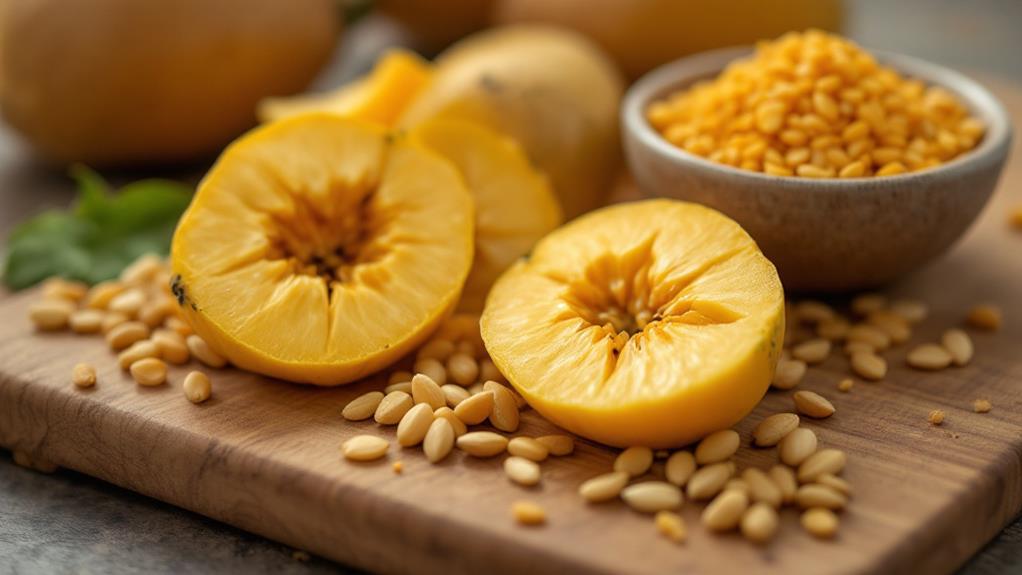
Due to its potential health risks, consuming santol requires caution. The seeds of santol fruits pose a significant risk of intestinal obstruction if swallowed. These seeds are inedible and large enough to cause blockages in your digestive tract, potentially necessitating surgical intervention. To avoid such complications, always guarantee you don't ingest any seeds while enjoying the fruit.
Additionally, be aware that santol can trigger allergic reactions. Symptoms like itching, swelling, and rashes may occur, along with digestive issues like bloating and diarrhea. If you have a known allergy to tropical fruits, it's essential to approach santol with care. Start with a small amount to test your tolerance and be vigilant for any adverse reactions.
For those managing blood sugar levels, the high sugar content in santol fruits can be a concern. It's wise to consume them in moderation, especially if you have diabetes. Consulting with your healthcare provider before making significant changes to your diet is advised.
Cultural Significance
Santol enjoys a rich cultural significance in Southeast Asia, particularly in the Philippines, where it features prominently in both culinary and traditional practices. In Filipino cuisine, santol symbolizes the tropical bounty and culinary versatility of local fruits. Its sweet-sour flavor improves a variety of dishes, making it a staple in both savory and sweet recipes. Beyond the kitchen, santol's cultural importance extends into folklore, where the tree is associated with the mythical pugot spirit. This connection underscores the deep ties between nature and mythology in Filipino culture.
You might find it fascinating how santol is valued not just for its taste but also for its health contributions through traditional medicine. It's recognized in local practices for its potential health benefits, showing its dual role in food and wellness. Additionally, santol's cultivation supports local economies and biodiversity. Here's how:
- Symbolism: Represents tropical richness in Filipino cuisine.
- Mythology: Linked to cultural folklore and spiritual beliefs.
- Traditional Medicine: Used in health practices across Southeast Asia.
- Economic Impact: Provides livelihoods and promotes biodiversity.
Understanding these aspects helps you appreciate how santol remains a crucial part of Southeast Asian culture.
Bioactive Compounds
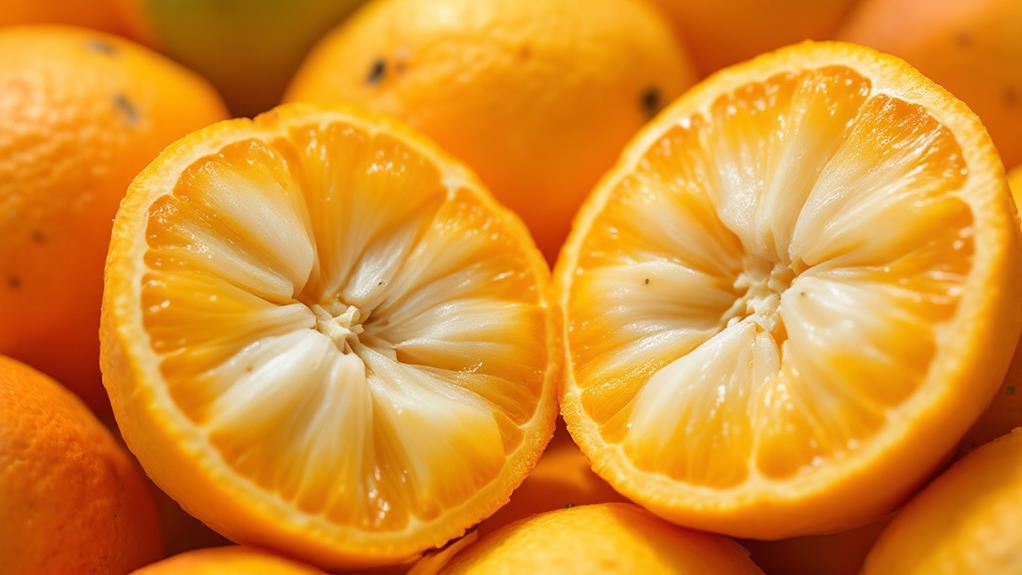
Exploring the bioactive compounds of santol, you'll find a fascinating array of natural products that contribute to its health benefits. Among them, limonoids and flavonoids stand out, playing key roles in promoting wellness. Limonoids, such as sandoripins A-B and sanjecumins A-B, not only add to santol's ecological value with their insecticidal properties but also strengthen its health-promoting arsenal.
For those concerned about inflammation and cancer, santol offers promising compounds. The anti-inflammatory triterpenes, koetjapic acid (KA) and sentulic acid, are particularly significant. These compounds have demonstrated potential in reducing inflammation, a vital factor in managing chronic diseases. Additionally, koetjapic acid shines with its marked anticancer effects. It inhibits key pathways like mTOR and cyclooxygenase 2, making it a valuable ally in cancer treatment.
Research also highlights potassium koetjapate (KK), which possesses improved antiangiogenic properties. This means it can help prevent the progression of cancer by inhibiting new blood vessel formation. By incorporating santol into your diet, you may tap into these bioactive compounds and their substantial health benefits, potentially aiding in inflammation reduction and cancer prevention.
Seasonal Availability
While the bioactive compounds of santol offer substantial health benefits, understanding its seasonal availability can help you make the most of this nutritious fruit. Santol, like many tropical fruits, is available year-round in subtropical to tropical climates, ensuring you can enjoy its benefits consistently. However, there are seasonal variations you should be aware of, particularly if you're in Southeast Asia. The peak harvest season usually runs from March to October, aligning with increased market visibility as demand rises during these months.
To optimize your santol experience, consider these factors:
- Climate Conditions: Local climate changes can influence santol's availability, impacting when and how much fruit is accessible.
- Regional Practices: Specific regional practices and cultural events might affect harvesting and distribution, so it's good to stay informed about local trends.
- Harvesting Method: Santol is often hand-picked or collected using long sticks. This method can be weather-dependent, influencing supply.
- Market Demand: During peak fruiting months, higher demand might drive up prices, but it also means the fruit is fresher and more abundant.

